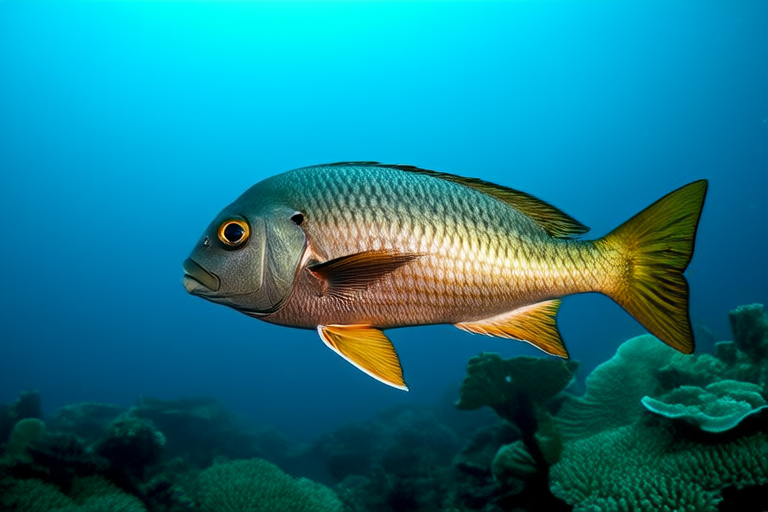Intelligence and Behaviors of Parrot Fish
The parrot fish is a fascinating creature known for its vibrant colors, diverse species, and unique survival strategies. This article delves into the intelligence and behaviors of parrot fish, exploring their problem-solving skills, social interactions, and survival tactics. By examining scientific insights, real-world observations, and relevant studies, we aim to shed light on the cognitive abilities of these remarkable marine creatures.
Unique Survival Strategies
Parrot fish have developed several survival strategies that showcase their intelligence. One of the most notable is their ability to change color and pattern to blend into their surroundings, a technique known as countershading. This adaptation helps them avoid predators by making it difficult for them to be seen from both above and below. Studies have shown that parrot fish can alter their appearance in response to different environmental conditions, demonstrating an advanced understanding of their environment and the need for camouflage.
In addition to their physical adaptations, parrot fish also exhibit behavioral changes to enhance their chances of survival. They often form large schools, which provide safety in numbers. Research has indicated that schooling behavior reduces the likelihood of individual predation, as predators find it harder to single out one fish in a group. Furthermore, parrot fish are known to follow larger fish, such as sharks or rays, as a means of protection. These fish serve as a shield against smaller predators, allowing the parrot fish to travel more safely through their habitat.
Problem-Solving Skills
Parrot fish possess impressive problem-solving skills that are often overlooked due to their aquatic nature. For instance, they have been observed using tools to access food sources. In some cases, parrot fish have been seen using rocks or coral fragments to break open sea urchins and other hard-shelled prey. This behavior demonstrates a level of dexterity and resourcefulness that challenges the notion that fish lack complex cognitive abilities.
Another example of parrot fish intelligence is their ability to navigate complex reef environments. They can remember the location of food sources and return to them regularly. This memory retention is crucial for their survival, especially in areas with limited resources. Scientists have conducted experiments where parrot fish were trained to associate specific visual cues with food rewards. The results showed that parrot fish could learn and recall these associations over time, indicating a high level of learning capacity.
Social Interactions
Parrot fish exhibit a range of social behaviors that highlight their cognitive abilities. They are known to engage in cooperative feeding, where multiple individuals work together to locate and consume food. This cooperation requires communication and coordination, suggesting a level of social intelligence. Additionally, parrot fish have been observed engaging in aggressive displays and territorial disputes, further emphasizing their social complexity.
One particularly interesting aspect of parrot fish social behavior is their ability to recognize individual members of their species. Studies have shown that parrot fish can distinguish between familiar and unfamiliar individuals, even after long periods of separation. This recognition is thought to play a role in maintaining social bonds and ensuring the stability of their communities.
Everyday Movements and Decisions
The everyday movements and decisions of parrot fish are influenced by a combination of instinct, learned behavior, and environmental factors. Their daily routines typically involve searching for food, avoiding predators, and interacting with other members of their species. These activities require constant assessment of their surroundings and adjustment of their behavior accordingly.
For example, parrot fish may alter their swimming patterns in response to the presence of predators. They may swim faster, change direction suddenly, or seek shelter in crevices or caves. Similarly, when searching for food, parrot fish will explore different areas of the reef, using their sense of smell and sight to locate potential food sources. They may also use their teeth to scrape algae from rocks and coral, demonstrating a methodical approach to feeding.
Challenging Common Perceptions
The intelligence and behaviors of parrot fish challenge common perceptions about fish intelligence. Many people assume that fish are simple creatures with little to no cognitive abilities. However, research has shown that parrot fish possess complex behaviors and problem-solving skills that rival those of many land-based animals. Their ability to change color, use tools, and navigate complex environments highlights the sophistication of their cognitive processes.
Moreover, the social interactions of parrot fish suggest a level of emotional intelligence that is often attributed to mammals. Their ability to recognize individual members of their species, engage in cooperative feeding, and resolve conflicts peacefully indicates a high degree of social awareness and empathy. These traits challenge the traditional view of fish as solitary and unemotional creatures.
Conclusion
The intelligence and behaviors of parrot fish are a testament to the complexity of marine life. Through their unique survival strategies, problem-solving skills, and social interactions, parrot fish demonstrate a level of cognitive ability that challenges common perceptions about fish intelligence. As we continue to study these remarkable creatures, we gain a deeper appreciation for the diversity and adaptability of life in the ocean.
